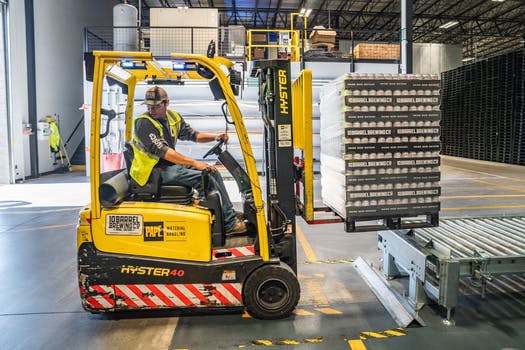How To Start A Distribution Business
“From sourcing to selling, your guide to launching a successful distribution business.”
Introduction
Starting a distribution business can be a lucrative venture for entrepreneurs who are interested in the logistics and supply chain industry. A distribution business involves buying products from manufacturers or wholesalers and selling them to retailers or directly to consumers. To start a successful distribution business, it is important to have a solid business plan, understand the market and competition, establish relationships with suppliers and customers, and have a reliable logistics and delivery system in place. In this article, we will discuss the key steps to starting a distribution business.
Identifying Your Target Market
Starting a distribution business can be a lucrative venture, but it requires careful planning and execution. One of the most important steps in starting a distribution business is identifying your target market. This involves understanding the needs and preferences of your potential customers, as well as the competition in your industry.
The first step in identifying your target market is to conduct market research. This involves gathering information about your potential customers, such as their age, gender, income level, and buying habits. You can gather this information through surveys, focus groups, or by analyzing data from industry reports.
Once you have a clear understanding of your target market, you can begin to develop a marketing strategy that will appeal to them. This may involve creating a brand identity that resonates with your target market, developing a pricing strategy that is competitive with other distributors in your industry, and creating a distribution network that reaches your target market effectively.
Another important aspect of identifying your target market is understanding the competition in your industry. This involves researching other distributors in your industry and analyzing their strengths and weaknesses. You can use this information to develop a competitive advantage that sets your distribution business apart from others in the industry.
One way to differentiate your distribution business from others in the industry is to focus on a specific niche market. For example, you may choose to specialize in distributing products to a specific geographic region, or to a specific industry such as healthcare or technology. By focusing on a niche market, you can develop expertise in that area and become a trusted partner for your customers.
In addition to understanding your target market and the competition in your industry, it is also important to consider the logistics of your distribution business. This includes factors such as transportation, warehousing, and inventory management. You will need to develop a system for tracking inventory levels, managing orders, and ensuring timely delivery of products to your customers.
One way to streamline the logistics of your distribution business is to use technology. There are a variety of software programs and tools available that can help you manage inventory, track orders, and streamline your distribution network. By using technology, you can improve efficiency and reduce costs, which can help you stay competitive in your industry.
In conclusion, identifying your target market is a critical step in starting a distribution business. By understanding the needs and preferences of your potential customers, as well as the competition in your industry, you can develop a marketing strategy that appeals to your target market and sets your distribution business apart from others in the industry. Additionally, by considering the logistics of your distribution business and using technology to streamline operations, you can improve efficiency and reduce costs, which can help you achieve long-term success.
Creating a Business Plan

Starting a distribution business can be a lucrative venture, but it requires careful planning and execution. One of the first steps in starting a distribution business is creating a business plan. A business plan is a document that outlines your business goals, strategies, and financial projections. It serves as a roadmap for your business and helps you stay on track as you grow and expand.
To create a business plan for your distribution business, you need to start by defining your target market. Who are your customers? What products or services will you be distributing? What is the demand for these products or services in your target market? These are all important questions to consider when defining your target market.
Once you have defined your target market, you need to research your competition. Who are your competitors? What are their strengths and weaknesses? How can you differentiate yourself from them? This information will help you develop strategies to compete effectively in the market.
Next, you need to develop a marketing plan. How will you reach your target market? What channels will you use to promote your products or services? How much will you spend on marketing? Your marketing plan should be tailored to your target market and should be designed to reach them where they are.
Financial projections are also an important part of your business plan. You need to estimate your startup costs, including the cost of inventory, equipment, and marketing. You also need to project your revenue and expenses for the first few years of your business. This information will help you determine how much funding you need to start your business and when you can expect to break even.
Finally, you need to develop an operations plan. This plan outlines how you will manage your distribution business on a day-to-day basis. It includes details on your supply chain, inventory management, and logistics. You also need to consider how you will handle customer service and returns.
Creating a business plan can be a daunting task, but there are resources available to help you. The Small Business Administration (SBA) offers free business plan templates and advice on their website. You can also hire a business consultant or accountant to help you develop your plan.
In conclusion, creating a business plan is an essential step in starting a distribution business. It helps you define your target market, research your competition, develop a marketing plan, project your finances, and plan your operations. With a well-crafted business plan, you can increase your chances of success and build a profitable distribution business.
Establishing Relationships with Suppliers
Starting a distribution business can be a lucrative venture, but it requires careful planning and execution. One of the most important aspects of starting a distribution business is establishing relationships with suppliers. In this article, we will discuss some tips on how to establish relationships with suppliers and ensure that your distribution business is successful.
The first step in establishing relationships with suppliers is to identify potential suppliers. You can do this by conducting research online, attending trade shows, and networking with other business owners in your industry. Once you have identified potential suppliers, you should reach out to them and introduce yourself and your business.
When reaching out to potential suppliers, it is important to be professional and courteous. You should explain your business and what you are looking for in a supplier. You should also ask about their products, pricing, and delivery options. This will help you determine if the supplier is a good fit for your business.
Once you have identified potential suppliers and have reached out to them, it is important to establish a relationship with them. This can be done by scheduling a meeting or phone call to discuss your business needs and how the supplier can meet those needs. During this meeting, you should also discuss pricing, delivery options, and any other important details.
It is important to remember that establishing a relationship with a supplier is a two-way street. You should be willing to listen to their needs and concerns as well. This will help you build a strong relationship with the supplier and ensure that they are willing to work with you in the long term.
Another important aspect of establishing relationships with suppliers is to be transparent and honest. You should be upfront about your business needs and any challenges that you may face. This will help the supplier understand your business better and work with you to find solutions to any problems that may arise.
In addition to being transparent and honest, it is also important to be reliable and consistent. You should always pay your bills on time and communicate any changes in your business needs to the supplier in a timely manner. This will help build trust and ensure that the supplier is willing to work with you in the long term.
Finally, it is important to maintain a positive relationship with your suppliers. This can be done by staying in touch with them regularly, providing feedback on their products and services, and showing appreciation for their hard work. By maintaining a positive relationship with your suppliers, you can ensure that your distribution business is successful and profitable.
In conclusion, establishing relationships with suppliers is a crucial aspect of starting a distribution business. By identifying potential suppliers, reaching out to them, and building a strong relationship based on transparency, honesty, reliability, and positivity, you can ensure that your distribution business is successful in the long term.
Setting Up Your Distribution Network
Starting a distribution business can be a lucrative venture, but it requires careful planning and execution. One of the most important aspects of setting up a successful distribution business is establishing a strong distribution network. In this article, we will discuss the key steps involved in setting up your distribution network.
The first step in setting up your distribution network is to identify your target market. This will help you determine the types of products you will distribute and the geographic areas you will cover. Once you have identified your target market, you can begin to research potential suppliers and manufacturers.
When selecting suppliers and manufacturers, it is important to consider factors such as product quality, pricing, and reliability. You should also consider the location of your suppliers and manufacturers, as this will impact your shipping and logistics costs.
Once you have identified your suppliers and manufacturers, you can begin to establish relationships with them. This involves negotiating pricing and terms, as well as setting up contracts and agreements. It is important to establish clear communication channels with your suppliers and manufacturers to ensure that you can quickly resolve any issues that may arise.
The next step in setting up your distribution network is to establish your distribution channels. This involves determining the most efficient and cost-effective ways to get your products to your customers. Some common distribution channels include direct sales, online sales, and partnerships with retailers and wholesalers.
When selecting your distribution channels, it is important to consider factors such as customer preferences, shipping costs, and competition. You should also consider the level of control you want to have over your distribution channels, as this will impact your overall business strategy.
Once you have established your distribution channels, you can begin to build your logistics and shipping infrastructure. This involves setting up warehouses, transportation systems, and inventory management systems. It is important to ensure that your logistics and shipping infrastructure is efficient and reliable, as this will impact your ability to deliver products to your customers on time and at a reasonable cost.
Finally, you should consider implementing technology solutions to help streamline your distribution network. This may include using software to manage inventory and shipping, or implementing automated systems to improve efficiency and reduce costs. It is important to stay up-to-date with the latest technology trends and innovations in the distribution industry to remain competitive and successful.
In conclusion, setting up a successful distribution network requires careful planning and execution. By identifying your target market, establishing relationships with suppliers and manufacturers, selecting efficient distribution channels, building a reliable logistics and shipping infrastructure, and implementing technology solutions, you can create a strong and profitable distribution business. With hard work and dedication, your distribution business can thrive and grow for years to come.
Marketing and Promoting Your Business
Starting a distribution business can be a lucrative venture, but it requires careful planning and execution. Once you have established your business model and secured your suppliers, the next step is to market and promote your business to potential customers. In this article, we will discuss some effective strategies for marketing and promoting your distribution business.
1. Develop a strong brand identity
Your brand identity is the foundation of your marketing efforts. It is what sets you apart from your competitors and communicates your values and mission to your customers. Develop a strong brand identity by creating a memorable logo, choosing a color scheme that reflects your brand personality, and crafting a compelling brand message that resonates with your target audience.
2. Build a professional website
In today’s digital age, having a professional website is essential for any business. Your website should be visually appealing, easy to navigate, and provide all the necessary information about your products and services. Make sure your website is optimized for search engines so that potential customers can easily find you online.
3. Leverage social media
Social media is a powerful tool for promoting your distribution business. Create profiles on popular social media platforms like Facebook, Twitter, and Instagram, and use them to engage with your audience. Share relevant content, post updates about your products and services, and respond to customer inquiries and feedback.
4. Attend trade shows and industry events
Attending trade shows and industry events is a great way to network with potential customers and suppliers. These events provide an opportunity to showcase your products and services, meet industry leaders, and stay up-to-date on the latest trends and developments in your field.
5. Offer promotions and discounts
Everyone loves a good deal, so offering promotions and discounts can be an effective way to attract new customers and retain existing ones. Consider offering a discount on first-time orders or creating a loyalty program that rewards repeat customers.
6. Partner with complementary businesses
Partnering with complementary businesses can help you reach a wider audience and increase your visibility. For example, if you distribute organic food products, you could partner with a local health food store to offer joint promotions or cross-promote each other’s products.
7. Use email marketing
Email marketing is a cost-effective way to stay in touch with your customers and promote your products and services. Build an email list by offering a free resource or discount in exchange for signing up, and send regular newsletters or promotional emails to keep your audience engaged.
In conclusion, marketing and promoting your distribution business requires a multi-faceted approach that includes developing a strong brand identity, building a professional website, leveraging social media, attending trade shows and industry events, offering promotions and discounts, partnering with complementary businesses, and using email marketing. By implementing these strategies, you can increase your visibility, attract new customers, and grow your business.
Conclusion
Starting a distribution business requires careful planning and research. It is important to identify a niche market, establish relationships with suppliers, and develop a strong distribution network. Additionally, having a solid business plan, financial resources, and a clear understanding of the industry are crucial for success. With the right strategy and execution, a distribution business can be a profitable venture.






